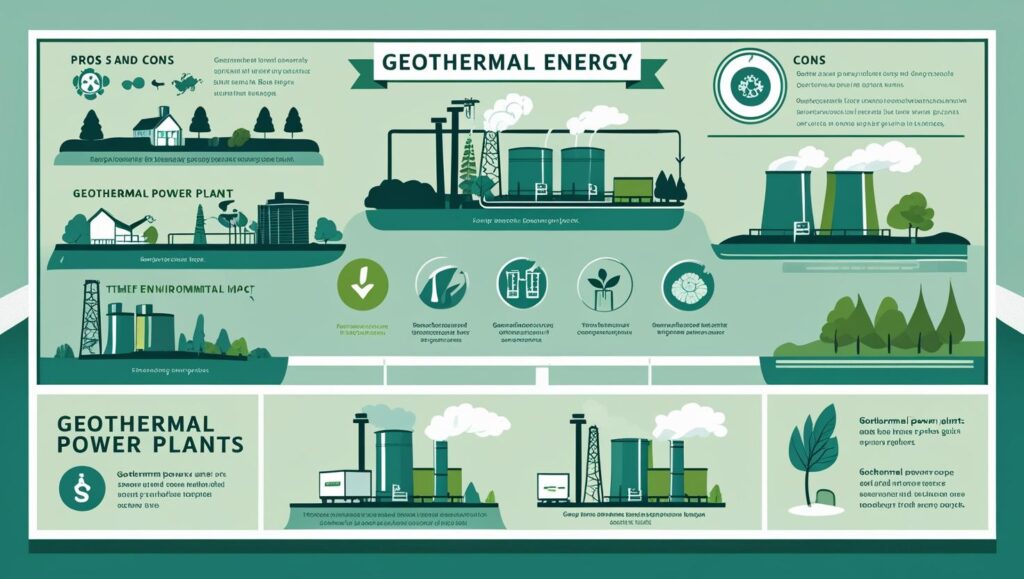Introduction
The question “Is geothermal energy really sustainable?” continues to spark debate among energy experts, environmentalists, and policymakers. In the context of today’s urgent push for clean energy, understanding the true sustainability of geothermal power is vital. This article delves into the ecological impact, technological challenges, and long‑term viability of geothermal energy as a cornerstone of the renewable energy mix. Aimed at energy planners, environmental professionals, and eco‑conscious investors the article explores the subject with data‑driven clarity and practical insight. This piece also resonates strongly in the niche of sustainable energy transition and clean power generation.
What Is Geothermal Energy and How Does It Work?
Geothermal energy harnesses Earth’s internal heat to generate power or provide heating and cooling. It’s a renewable, low‑carbon alternative often used for electricity generation and direct heating applications. As a geothermal energy renewable source, it offers a reliable, baseload supply—unlike solar or wind, which depend on weather conditions. Geologically, this energy comes from deep reservoirs of hot water and steam, accessed via drilling. Ground-source heat pumps (near‑surface) and deep geothermal systems are two main methods; each with distinct applications and scalability potential.
Environmental Benefits of Geothermal Energy
One of the leading advantages of geothermal energy is its minimal greenhouse gas emissions. Geothermal power plants emit approximately 99% less CO₂ and 97% fewer sulfur compounds compared to fossil fuel plants :contentReference[oaicite:4]{index=4}. Moreover, geothermal electricity production emits as little as 45 g CO₂ per kWh—under 5% of the emissions from coal-fired plants :contentReference[oaicite:5]{index=5}. Combined with other renewables like solar and wind, geothermal forms a clean and powerful energy portfolio :contentReference[oaicite:6]{index=6}.
Challenges and Limitations
Despite clear environmental advantages, geothermal energy isn’t without challenges. High upfront costs—particularly for deep drilling and reservoir development—remain a barrier. Some geothermal processes, such as enhanced geothermal systems (EGS), involve complex stimulation techniques and potential seismic risks :contentReference[oaicite:7]{index=7}. Water usage in cooling and resource extraction can also raise environmental concerns—such as aquifer depletion or contamination—especially in water-scarce regions :contentReference[oaicite:8]{index=8}.
Innovations & Future Prospects
Next‑generation systems like closed‑loop geothermal offer promising scalability and reduced ecological impact. These engineered systems circulate fluid in sealed underground loops, avoiding rock contact, reducing induced seismicity, and allowing deployment almost anywhere—not just near geothermal hot spots :contentReference[oaicite:9]{index=9}. Recent pilot projects in Whisper Valley, Texas, demonstrate that community-scale systems can lower utility bills substantially, although installation costs (e.g. ~$40,000 per home) are still steep :contentReference[oaicite:10]{index=10}.
Comparative Table: Geothermal vs Other Energy Sources
| Energy Source | CO₂ Emissions | Reliability | Scalability |
|---|---|---|---|
| Coal | High | High | High |
| Solar / Wind | Low | Intermittent | Moderate |
| Geothermal Energy | Very Low | Constant (Base‑load) | Moderate–High |
Conclusion
Overall, geothermal energy stands as a truly sustainable and renewable energy option—with exceptionally low carbon intensity and reliable output. Yet, its adoption is slowed by high capital costs, geological constraints, and water-related concerns. Innovations like closed-loop systems and supportive policies can help overcome these limitations. For stakeholders in the niche of sustainable energy, understanding these dynamics helps ensure geothermal energy plays a key role in global decarbonization strategies.
Frequently Asked Questions
- Is geothermal energy completely carbon-free? While not entirely carbon-free, geothermal energy emits significantly less CO₂—up to 99% less—than fossil fuels :contentReference[oaicite:11]{index=11}.
- Why is the initial cost of geothermal energy high? High costs stem from complex drilling and infrastructure needed to access deep geothermal reservoirs—though long-term payoff and incentives often justify the expense.
- Can geothermal be used anywhere? Traditional geothermal requires specific geology, but next-gen systems like closed-loop designs can be deployed in many regions, increasing geographic flexibility :contentReference[oaicite:12]{index=12}.
Interesting Facts
- Geothermal plants emit as little as 45 g CO₂/kWh—under 5% of coal plant emissions :contentReference[oaicite:13]{index=13}.
- Closed-loop geothermal systems eliminate the need for fracking and contact with rock formations :contentReference[oaicite:14]{index=14}.
- Whisper Valley in Texas uses geothermal for both heating and cooling, drastically cutting utility bills :contentReference[oaicite:15]{index=15}.



